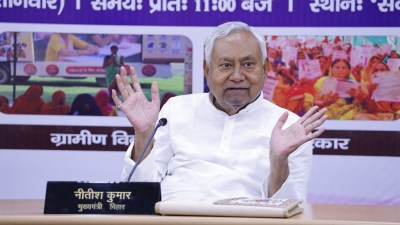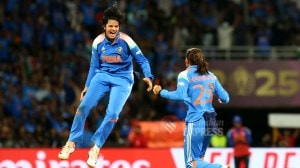Nanavati let off all police officers from worst massacre site
The largest Sikh massacre in a single locality in 1984 took place at Block Nos 32 and 36 of Trilokpuri in East Delhi, where, according to th...

The largest Sikh massacre in a single locality in 1984 took place at Block Nos 32 and 36 of Trilokpuri in East Delhi, where, according to the Nanavati Commission, ‘‘almost all Sikh males of these two blocks were killed.’’ Out of the official death toll of 2,733 in the carnage, East Delhi alone accounted for 1,086 deaths.
And yet, what got lost in the debate over Jagdish Tytler’s resignation and the Prime Minister’s evocative speech in Parliament, was one startling fact: none of the police officials Nanavati indicted was from this area or from anywhere in East Delhi—or even from West Delhi, the two worst-affected police districts in that order.
In fact, although all six police districts of Delhi were affected by the 1984 carnage in varying degrees, Nanavati recommended action against police officials from only three of them.
Sewa Dass, who was then in charge of East Delhi, is now special commissioner, the number two in the Delhi Police. He is due to retire next month.
The Nanavati Commission did not recommend any action against him even after recording the allegation made by ‘‘many witnesses’’ that Sewa Dass and his subordinates in East Delhi ‘‘had even encouraged the mobs while they were attacking Sikhs.’’
The commission glossed over one sensational discovery that was made about the Trilokpuri massacre in the course of the inquiry. That Sewa Dass knew about the mass killings in Block Nos 32 and 36 long before The Indian Express reporters Rahul Bedi and Joseph Maliakan—Bedi has since left the newspaper—brought it to the notice of the police headquarters in the evening of November 2.
Logbooks of wireless messages produced by the police before the Nanavati Commission showed for the first time that Sewa Dass had been informed by the local police station about the Trilokpuri violence more than 24 hours before his superiors came to know about it from the reporters of The Indian Express.
Confronted with this documentary evidence, Sewa Dass admitted in writing to the Nanavati Commission in 2002: ‘‘I had received a message from SHO Police Station Kalyanpuri at about 1510 hours on 1.11.84 that looting and killing was going on in Block No. 32 and Block No. 36 of Trilokpuri.’’
This puts the onus on him to explain why, despite the message that came to him from his SHO in the afternoon of November 1, he failed to alert his superiors and call for reinforcements that could have averted the bulk of the killings in the night between November 1 and 2. The most the Commission could say: ‘‘Vital information appears to have been suppressed deliberately by the police at all levels and the gravity of the situation was tried to be minimised.’’
For its own suppression of evidence against Sewa Dass and its failure to recommend action against him, the Commission mentioned a technicality: “As departmental inquiry was held against him and he has been exonerated, the Commission does not recommend any action against him.”
This flies in the face of the indictment of a similarly placed police officer, Chandra Prakash, who was Sewa Dass’s counterpart in South Delhi. Brushing aside Chandra Prakash’s plea that he too had been exonerated in a departmental inquiry, the Commission said: ‘‘The object, nature and scope of inquiry under the Commissions of Inquiry Act is quite different. It has a much wider scope than a departmental inquiry or a criminal trial.’’
The Commission’s report gives no explanation for why it did not adopt the same approach to East Delhi, which saw killings on an even larger scale, and make a similar recommendation against Seva Dass and his men.
When asked wasn’t it odd that the Commission made no recommendations against any of the police officials in charge of East Delhi, Sewa Dass told The Indian Express: ‘‘Nothing odd. Everybody has already been exonerated in the departmental inquiry.’’
But that did not stop the Commission from indicting your counterparts in South Delhi? ‘‘What can I say? The judge (Justice G T Nanavati) is the right person to answer that question,’’ he said.


- 01
- 02
- 03
- 04
- 05





























